A Men’s Guide to Trousers

Jackets and shoes are items that we pay attention to the most, but wearing the right pair of trousers can make quite a powerful fashion statement. This piece of clothing can be combined in many different ways.
5-Minute Crafts gathered a list of different types of pants so you can know how to choose ones that fit your personal style the best.
Bell bottoms
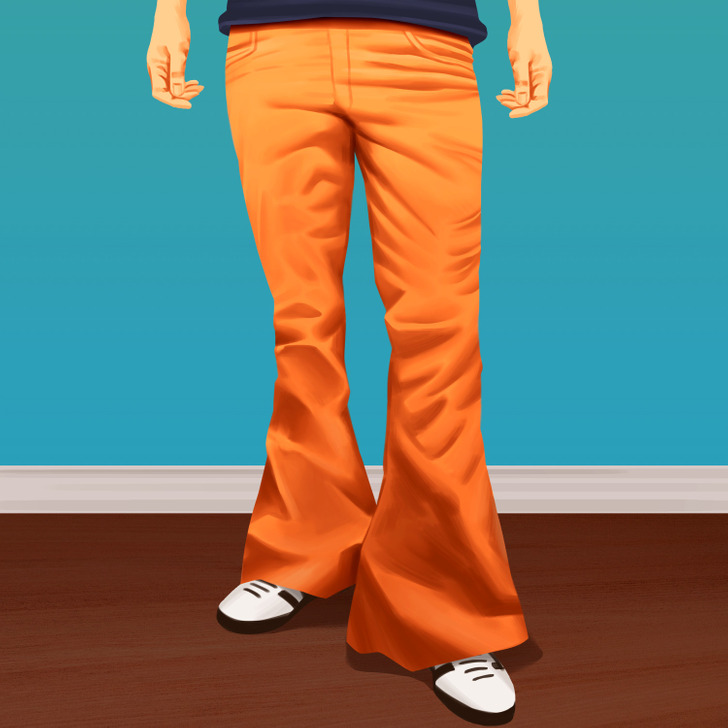
These pants, which are associated with 1960s counterculture, are also known as sailor pants or flares (flared pants) and were created by sailors in the US. The wide-legged bottoms were popular in the Navy because they were easy to roll up so they wouldn’t get wet. The fit is tight around the waist, rear end, and thighs, while the flaring out starts from the knees and continues to the ankles. Since they have a classic status, they are always in style.
Breeches
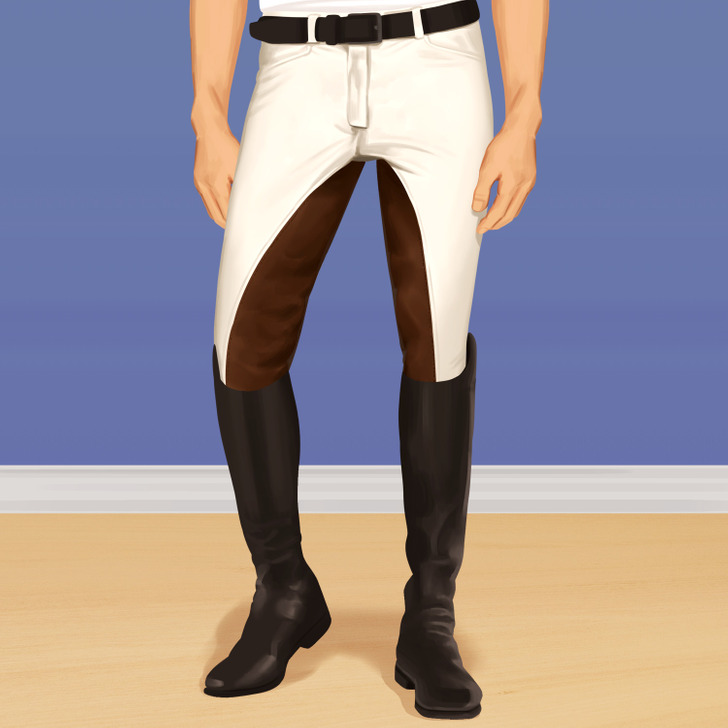
These close-fitting, stretchy pants are popular among horse riders. Some of them have padding around the knees or in other places in order to improve the saddle grip.
Jeans

Jeans are among the most worn pants across the world. Since they are available in many different colors, cuts, and styles, you can combine them with dress shirts or plain T-shirts, vests or sweaters, sneakers, and shoes. There is also a wide variety of fits that you can choose from, like slim, skinny, bootcut, regular, wide, etc.
Cargo pants
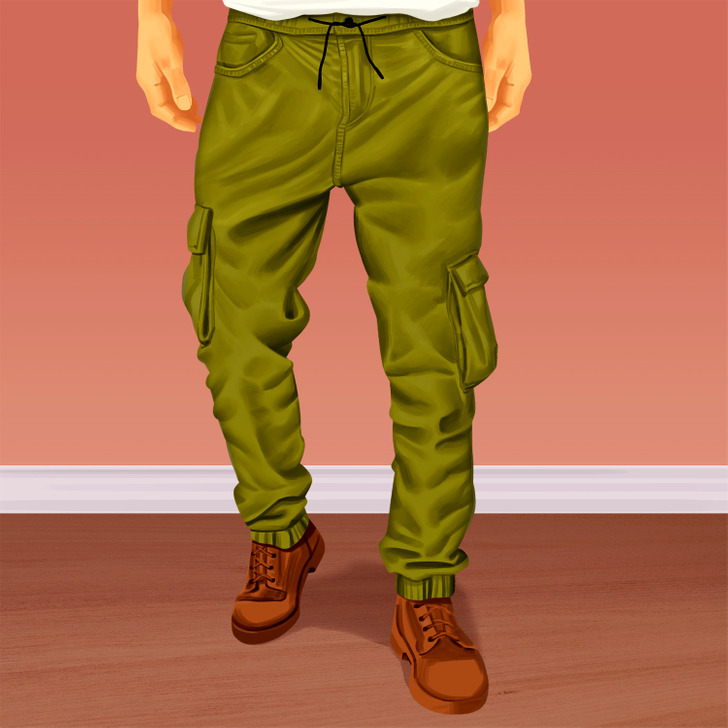
Cargo pants were originally made for the military back in the 1930s from cotton with many big pockets on the side. They are very casual and are often baggy, but some cuts are slimmer through the leg and are hemmed or tapered at the ankles. Usually, they come in shades of olive or khaki. If you want to dress them up, you can combine them with a knitted sweater or a shirt and loafers or Chelsea boots.
Chinos

Although these pants look similar to khakis, chinos have some hidden stretch for a more finished look. They are usually made from synthetic fibers and cotton and can be worn casually or on dressier occasions, paired with a nice shirt or T-shirt.
Khakis
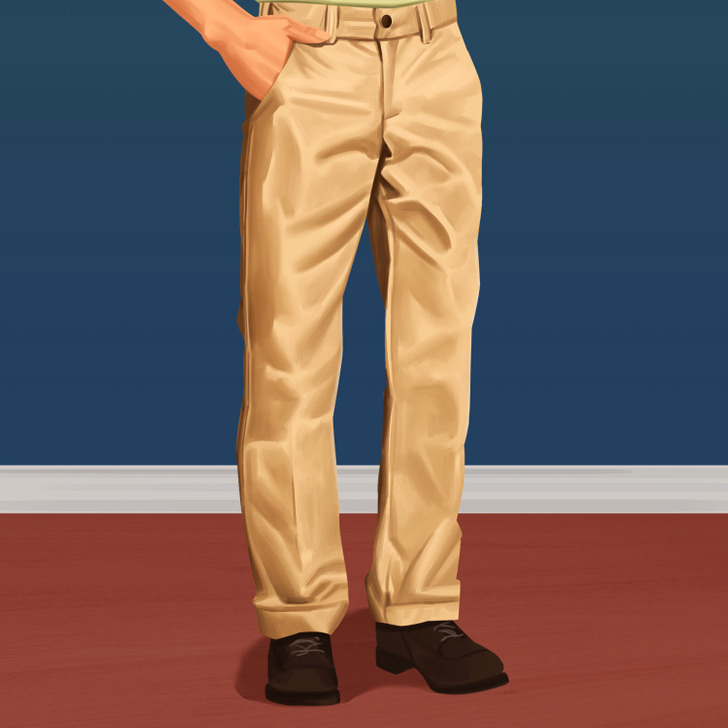
These pants can be very versatile and comfortable. Pair them with dress shirts, blazers, or jackets. They are easy to wear since they go with all clothing items. They differ from khakis because they are pleated, straight-legged, and made from heavy cotton.
Straight pants

As the name suggests, these bottoms fall down straight from the hips to the bottom. They have a comfortable, classic fit and are not tapered at the bottom.
Leather pants
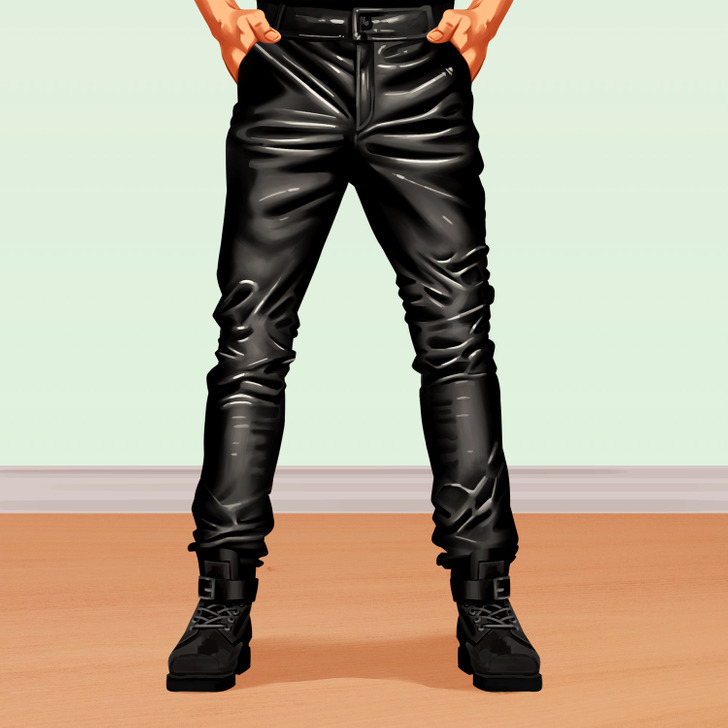
These pants can offer a rugged look, but they are very versatile. You can combine them with a classic black T-shirt and black boots or you can go for a sporty look and wear them with a sweatshirt and sneakers.
Corduroy trousers

They are also known as "cords,"’ made of woven, twisted cotton or wool, and have a very characteristic pattern of lines, which are called ’’wales.’’ They are very long-lasting and resistant as well as warm, so you can wear them in cold weather. You can opt to wear them casually with a sweatshirt and sneakers but also as formal attire in the form of a slim corduroy suit.
Dress pants

Even if you’re going for the professional look or smart-casual, dress pants can come in handy. Also known as slacks, you can wear them with a blazer, shirt, or sweater. They usually come in a slim fit.
Relaxed-legged trousers

These pants have a wider cut so they can fit nicely and comfortably. They can be made from different materials, such as cotton, linen, or wool, and they are mostly for everyday wear. When you are shopping for these, be sure to choose the right length, not too long nor too short. The hem should fall in between the top of the shoe and the shoe’s eyelets on the top.
High-waisted trousers

High-waisted trousers are currently trending in the world of men’s fashion. They can fit very nicely, but it is crucial to get the right length and cut. You can choose a wider cut, but make sure you are not ’’drowning’’ in the material, or you can get a tapered fit that will allow the bottom part of the trousers to sit nicely on top of your shoes. They are a part of a suit, but you can combine them with a polo shirt or a tucked-in T-shirt.
Pleated trousers

Known for their fold that is in between the zipper and the pocket, these trousers can give another inch of material to each leg and offer more breathing room. Although they are traditional, they are not technically formal. You can combine them with bowling shirts, white T-shirts, sweatshirts, slip-ons, or brogues.
Pegged pants

Pegged pants mostly have 2 pleats that join where the waistband is. They stretch out down the thighs and are tapered at the ankles. Some of them can be cropped at the bottom or high-waisted. This style was popular in the 1950s (and later in the 1980s) among men, but later, among women too, as it was noted that they fit women’s bodies better.
Linen trousers

Linen trousers are worn in summer since the material is breathable and can absorb moisture. These clothing items are practical and can fit nicely on almost every body shape. You can wear them as a part of a suit or in a modern way, pairing them with sneakers and a T-shirt.
Wool trousers

This category has a very wide range and includes any pants made of wool. Suit pants are made of lightweight fabric, while traditional trousers are made of heavier wool material. Either way, they can be sophisticated and worn at formal events but also casually with sneakers.
Cropped trousers

Not to be mistaken with pantaloons, cropped trousers are shorter than the average pants, which makes the ankles visible. Getting the right fit is important, so if you are not visiting a tailor, try to choose a pair that is 3 or 4 inches above the ankle. Cropped trousers can be worn both for formal events (e.g. you can combine black cropped trousers with a charcoal turtle neck and oxblood dress shoes) or on everyday occasions.
Drawstring trousers

If you are looking for bottoms in which you can feel relaxed, drawstring trousers can be a perfect solution. With an adjustable string, they are comfortable and trendy. You can wear these pants on different occasions, from lounging at home to casual dining out, and even to wedding ceremonies.
Joggers

Slimline joggers give more of a streetwear “vibe” when combined with a T-shirt. They have a slim fit and are breezy, and you can wear them casually while doing sports or going out with your friends. You can experiment and combine these pants with white lace-up trainers or even Oxford shirts.
Tracksuit bottoms

These sporty pants come in different varieties, from tailored ones with side-stripes to models made entirely of nylon. They should always be paired with sportswear, but nowadays, men are combining them with everyday shoes too.
Stirrup pants

Stirrup pants are often worn by athletes. They have a strap at the end of each leg that is fastened around the bottom of the foot. These straps prevent the pants from riding up.
Pajama pants

The fit guide

You can see what different fits are and choose the one that is most suitable for you:
- Skinny fit: This cut is snug and narrow from the hips to the ankles. They sit below the waist, and the legs are skinny through the seat and thigh.
- Slim fit: They show the contour of the body but are not skin-tight. Slim-fit pants sit below the waist and are slim through the seat and thigh.
- Original fit: These sit on the waist, and the leg fit is traditional, which means that they provide more room in the rear and thigh area.
- Regular fit: The fit is a bit loose but not baggy, and they sit slightly below the waist.
- Relaxed fit: They also sit slightly below the waist but have more room through the seat and thigh.
- Loose fit: These have more room through the legs and sit at the waist.
The hem break

The hem break is the fold or creasing of the trousers’ material. It is above the bottom part of the front pant leg where it meets the footwear. Let’s take a look at the hem break scale:
- The full break: It is meant for a wider body shape and waist, as it can visually make the upper body less contrasting to the lower body. It is considered a conservative break.
- The half break: This is a very typical slim-fit cut. It is in the center of the hem-break scale and gathers around the ankle a little bit.
- The slight break: It falls nicely without clutter and is excellent if you want to achieve a professional, business look. It’s tapered and looks best without cuffs and with the back pant leg angled a bit longer than the front.
- Cropped trousers: This cut fits nicely on a lean body. The pant leg is above the top of the ankle, which makes the socks visible.